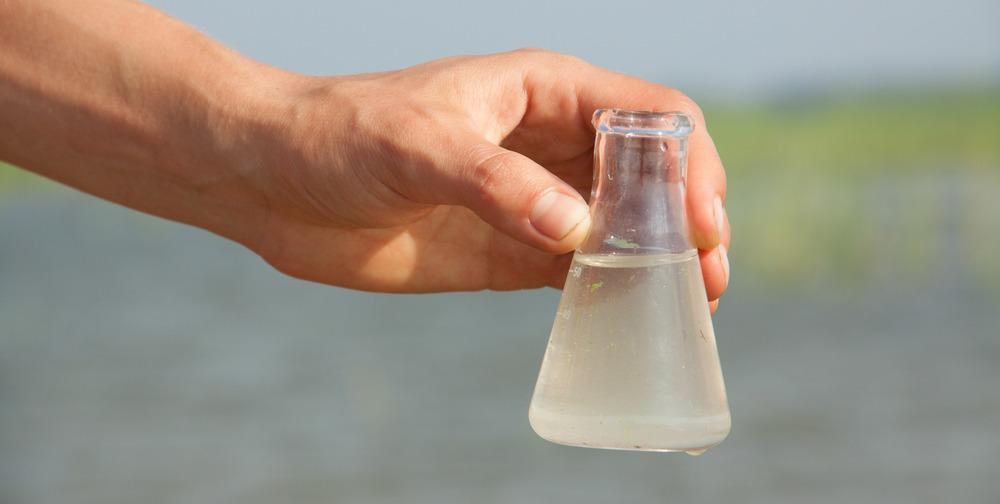South Australian-based company Sparc Technologies Limited (ASX:SPN) has secured a US patent for graphene-based materials. These materials can provide new technology for environmental remediation to remove heavy metals from water and convert contaminated water into drinking water.

Image Credit: Merkushev Vasiliy/Shutterstock.com
Nowadays, many industries are focused on having more sustainable production and environment-friendly business models. As well as looking for greener solutions, there is a strong focus on environmental remediation technologies.
Although many organizations have been addressing environmental issues and governments have been taking important steps towards resolving those issues, water and air pollution continues to be of big concern worldwide. Major water pollutants worldwide are heavy metals, such as arsenic and mercury, and having technologies to remove them from water is essential for environmental remediation.
Graphene-Based Environmental Remediation Technology
Sparc proposed one such technology using graphene-based materials, for which it has recently been granted a US patent.
Graphene is a two-dimensional material discovered in 2004 by Professor Andre Geim and Professor Kostya Novoselov, and since then has revolutionized material science. It is made out of carbon atoms arranged in a hexagonal lattice and finds applications in many industries, including electronics, photonics, healthcare, and environmental remediation industries.
Graphene combines many essential properties for a material – it is light and thin but at the same time 200 times stronger than steel. It is also elastic, hydrophobic, and has good anti-microbial properties.
With its hydrophobicity, graphene is a suitable material to clean contaminated water from different substances because it can separate toxins from water. These advantages make it a well-suited material for major uses to solve environmental challenges to help industries take steps towards a more sustainable future.
Sparc's technology could remove contaminants such as Per- and polyfluoroalkyl substances (PFAS), arsenic, and mercury from water. This technology paves the way towards a sustainable solution to major environmental problems related to contamination with such substances.
What are PFAS?
PFAS are a large, complex group of man-made chemicals that are often used to produce everyday products. They are frequently used because they help maintain the waterproof, greaseproof, and non-stick properties of products.
PFAS are made up of long chains of carbon and fluorine atoms, and due to the strong bond between carbon and fluorine, they do not degrade in the environment, and their half-life is unknown. They significantly impact the environment and contaminate the soil and water when they are widely used in industries.
Exposure to PFAS can be linked to several diseases and illnesses such as cancer and hormone disruption as well as weakening the immune system. Since they stay in the environment for years, over time, they accumulate in the human body. As PFAS do not naturally break down in the environment, the only way to prevent them from causing long-term health effects is through environmental remediation.
Graphene-Based Materials to Remove PFAS
Sparc is performing essential research in removing PFAS contaminants from water using graphene-based absorption materials. The efficiency demonstrated is consistently much higher than the one shown with current leading techniques using activated carbon treatment.
The tests performed by Sparc for treatment of contaminated water were carried out using polyamine-modified reduced graphene oxide adsorbent. The study was done on PFAS-contaminated water with the most common PFAS compounds. The results showed that polyamine-modified reduced graphene oxide could be twice as effective as the current techniques used.
Tom Spurling, Sparc managing director, shares that these results are very promising and will enable testing the products in a commercial environment. Furthermore, future tests will be focused on the reusability of the graphene-based sorbents as well as their speed of extraction and how it depends on the quantities of graphene used.
The patent secured by Sparc covers numerous graphene-based materials, which allows the company to develop its research towards removing water contaminants and facing other environmental challenges.
The managing director and chief executive officer of Sparc, Mike Bartels, shares that securing this patent is also an essential step towards working more closely with commercial partners to develop the technology further.
With the increased contaminants and pollutants and the growing demand for clean drinking water, environmental remediation technologies, such as the one developed by Sparc, are essential for paving the way to a more sustainable future.
References and Further Reading
Geim, A. K. and Novoselov, K.S. (2007) The rise of graphene. Nature materials. https://doi.org/10.1038/nmat1849
Kolařík, J., et al. (2021). Carboxylated Graphene for Radical-Assisted Ultra-Trace-Level Water Treatment and Noble Metal Recovery. ACS nano. https://doi.org/10.1021/acsnano.0c10093
Nicholas, L. (2021). Sparc Technologies closer to commercialising graphene-based environmental remediation technology following US patent. [Online] Small Caps. Available at: https://smallcaps.com.au/sparc-technologies-graphene-based-environmental-remediation-technology-us-patent/ (Accessed on 15 June 2021)
Nicholas, L. (2021). Sparc Technologies graphene-based adsorptions materials again effective against PFAS contaminants. [Online] Small Caps. Available at: https://smallcaps.com.au/sparc-technologies-graphene-based-adsorptions-materials-effective-against-pfas-contaminants/ (Accessed on 15 June 2021)
Cotton, I. (2021). Sparc Technologies’ testing confirms improvement potential for chemically-damaged environments using graphene. [Online] Small Caps. Available at: https://smallcaps.com.au/sparc-technologies-improvement-chemically-damaged-environments-graphene/ (Accessed on 15 June 2021)
Sparc Technologies. [Online] Sparc Technologies. Available at: https://sparctechnologies.com.au/ (Accessed on 15 June 2021)
Perfluoroalkyl and Polyfluoroalkyl Substances (PFAS). [Online] National Institute of Environmental Health Science. Available at: https://www.niehs.nih.gov/health/topics/agents/pfc/index.cfm (Accessed on 15 June 2020)
Pelch, K., Reade, A., Wolffe, T. and Kwiatkowski, C. (2019). PFAS health effects database: Protocol for a systematic evidence map. Environment International. https://doi.org/10.1016/j.envint.2019.05.045
Disclaimer: The views expressed here are those of the author expressed in their private capacity and do not necessarily represent the views of AZoM.com Limited T/A AZoNetwork the owner and operator of this website. This disclaimer forms part of the Terms and conditions of use of this website.